Por que a circulação da água é crucial para a eficiência do chiller?
Por que a circulação da água é crucial para a eficiência do chiller?
Este artigo investiga por que a água deve ser divulgada através de um Refriador de água e o impacto significativo que tem na eficiência do chiller. Você se beneficiará do entendimento de como a circulação de água adequada aumenta a transferência de calor, evita superaquecimento, e otimiza o uso de energia, em última análise, prolongando a vida útil do chiller e reduzindo os custos operacionais.
Pontos -chave
- A circulação adequada da água é vital para a eficiência do chiller
- O aumento da taxa de fluxo de água aumenta o desempenho do refrigerador
- A prevenção do superaquecimento do equipamento garante a longevidade
- A taxa de fluxo de água afeta significativamente o desempenho do resfriador
- A circulação inadequada de água leva a problemas operacionais
- As dicas de manutenção são cruciais para a circulação ideal de água
Como a circulação da água afeta a eficiência do chiller?
Os chillers de água funcionam no preceito do calor alternativo, em que a água age porque o número um meio para absorver o calor do meio ambiente ou processo é o resfriamento de milhas. Esse calor absorvido é então transferido para a máquina de resfriamento do chiller, na qual está muito expulso, geralmente para o ar externo.
A eficiência desse sistema de comutação de calor é baseada de perto na taxa na qual a água circula através do chiller. Uma carga de deslizamento direito garante que o calor seja absorvido e removido corretamente, impedir a máquina de superaquecer e reduzir a energia necessária para manter a temperatura preferida. Esta é uma consideração importante em cada um do design e operação de sistemas de chiller.
| Taxa de água (GPM) | Desempenho do chiller (% crescimento) | Taxa de transferência de calor (Btu/hr) |
| 100 | 85% | 500,000 |
| 200 | 95% | 1,000,000 |
| 300 | 98% | 1,500,000 |
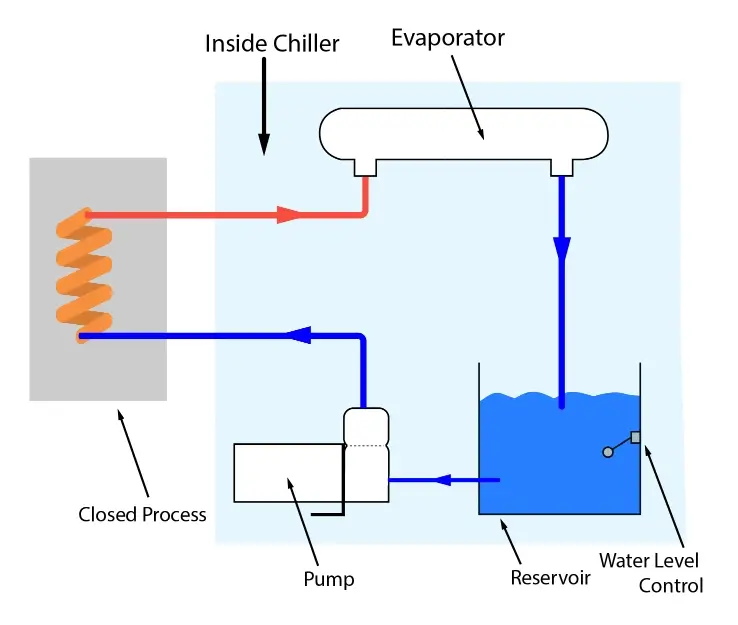
Como ilustrado dentro da tabela acima, Aumentar a taxa de deslizamento da água pode aumentar substancialmente o desempenho do chiller. Isso ocorre porque a maior água circulando através do sistema significa que mais calor pode ser transferido de acordo com a unidade de tempo. Portanto, Manter a carga adequada do WAFT não é apenas uma contagem de equilíbrio operacional, mas também de eficiência de força e efetividade de preços.
É importante exibir e preservar a taxa de deslizamento como consistente com as especificações de design do chiller. Desvios dessas especificações podem causar ineficiências, Como uma taxa de waft muito baixa ou muito alta pode afetar negativamente a capacidade da máquina de manipular com eficiência o calor. Citações de flutuação de água baixa levam a absorção insuficiente de calor, infligir o chiller para trabalhar mais e usar mais força, Ao mesmo tempo que cargas excessivamente altas podem causar erosão e desgaste prematuro dentro da tubulação e gadget.
Para concluir, Manter o fluxo adequado de água dentro de um chiller é fundamental para maximizar a eficiência, otimizando o uso de energia, e prolongando a vida útil do gadget. Testes e saldos normais, conforme descrito em horários de manutenção, são imperativos para garantir que o sistema opere em sua satisfação.
O papel da água nos processos de troca de calor nos chillers
Como um meio, O excesso de potencial de calor específico da água o torna excepcionalmente eficaz no absorção e transporte do calor. Em chillers, A água é usada para transportar calor distante do compressor do sistema, Isso é fundamental para manter o desempenho e a capacidade do ciclo de resfriamento.
Dentro do método de comércio de calor, A água circula através de um circuito fechado dentro do chiller. Primeiro absorve o calor gerado através do compressor. Esta água aquecida viaja para um condensador, onde libera o calor para os arredores circundantes, geralmente o ar ou uma linha de água secundária em sistemas maiores. A água resfriada é então recirculada devolvida para absorver mais calor, continuando o ciclo.
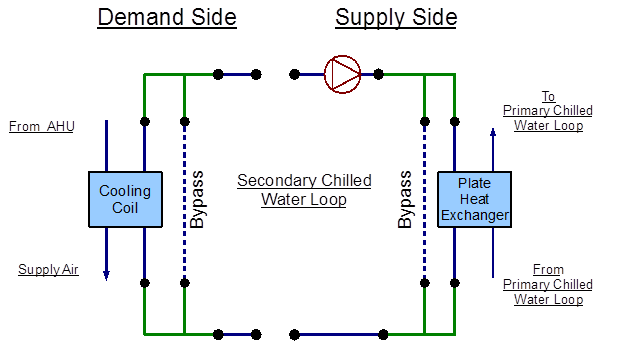
Esse desvio contínuo da água garante que o chiller opere a temperaturas mais desejáveis e impede que a máquina superaqueça. A poderosa movimento da água é crucial para preservar a eficiência desta técnica, Como qualquer interrupção dentro do fluxo pode resultar em um boom de temperatura, que por sua vez, reduz o desempenho do chiller e pode potencialmente raciocinar a falha do equipamento devido ao superaquecimento.
O desempenho do sistema de troca de calor é imediatamente estimulado por vários fatores, que incluem pureza da água, taxa de desvio, e as propriedades corporais dos aditivos de gadgets. Quaisquer modificações nesses parâmetros podem afetar notavelmente o potencial do chiller para executar seus recursos com sucesso. Consequentemente, Preservar a água certa excepcional e seguir o fluxo através do dispositivo é vital para sustentar as condições operacionais mais apropriadas.
Além disso, O desempenho do comércio de calor também pode ser otimizado por meio de ajustar a taxa na qual a água circula através do chiller. Uma taxa de waft mais alta geralmente melhora o desempenho da transferência de calor, No entanto, também exige mais energia para a água circula. Como resultado, A realização de uma estabilidade entre transferência de calor eficiente e consumo de eletricidade é fundamental para projetar e executar sistemas de resfriador eficazmente.
Prevenção de equipamentos superaquecendo e garantindo a longevidade
Chillers de água são projetados para adiar o calor dos métodos ou estruturas de condicionamento através da mudança desse calor para a água. Sem bom movimento, A maneira de transferência de calor se tornará ineficiente, levando a um aumento de temperaturas que podem projetar falha prematura de gadgets.
O fluxo de água consistente ajuda dentro da dissipação estável e poderosa do calor. Ele garante que a temperatura do meio de resfriamento permaneça dentro dos limites operacionais projetados, protegendo assim aditivos sensíveis, incluindo compressores, evaporadores, e condensadores. This safety in opposition to overheating isn’t simplest vital for preserving chiller performance however also extends the lifespan of the system with the aid of lowering thermal strain.
additionally, adequate water float allows in averting hot spots inside the chiller unit. These hot spots can result in the formation of scale and corrosion, which detrimentally impact the performance and durability of the chiller. Ensuring a uniform temperature distribution and consistent water chemistry minimizes those dangers, thereby preserving the integrity of the chiller’s inner surfaces.
| Factor | Função | Effect of Overheating |
| Compressor | Compresses the refrigerant and circulates it through the gadget. | better operating temperatures can result in mechanical failures and lubrication breakdown. |
| Evaporador | Absorbs warmth from the method or area being cooled. | Scaling and fouling can arise, lowering heat switch performance and growing electricity intake. |
| Condensador | Releases absorbed warmness to the water being circulated. | inadequate cooling can motive the condenser to function above its capacity, leading to ability shutdowns and maintenance. |
It’s miles evident that retaining an finest water movement rate isn’t always simply a depend of overall performance efficiency but is essential for stopping downtime and extending the operational life of the chiller. Regular tracking and upkeep of the water glide price have to be an necessary a part of any chiller device management plan to make sure those targets are met.
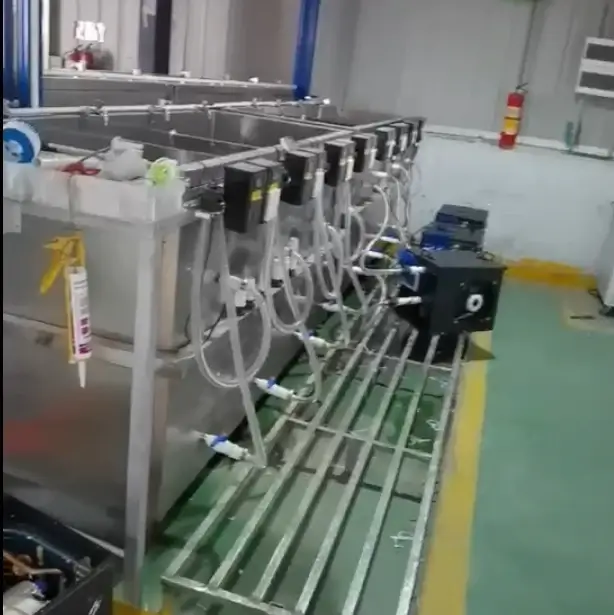
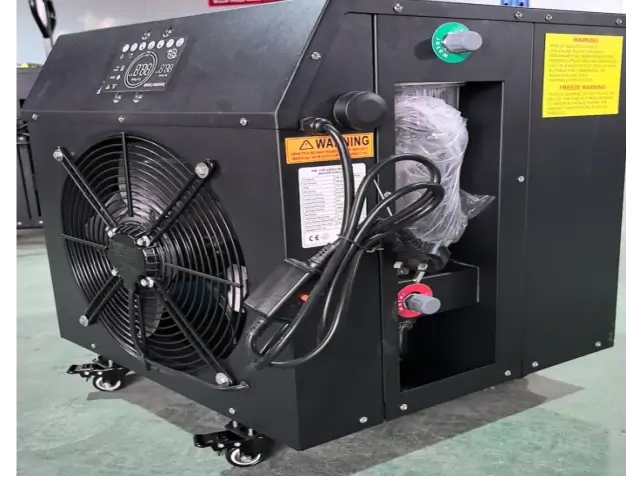
Impact of Water Flow Rate on Chiller Performance
Right stream of water guarantees that warmth alternate within the chiller gadget occurs efficiently. An wrong go with the flow price can lead to numerous problems that compromise the system’s effectiveness and durability.
At an premier float fee, the water can correctly soak up warmth from the chiller’s condenser, for this reason maintaining the favored temperature control. If the water flow is simply too low, it could no longer soak up enough warmth, inflicting the chiller to work tougher than essential. This no longer most effective will increase electricity consumption however additionally leads to extended put on and tear on the chiller components.

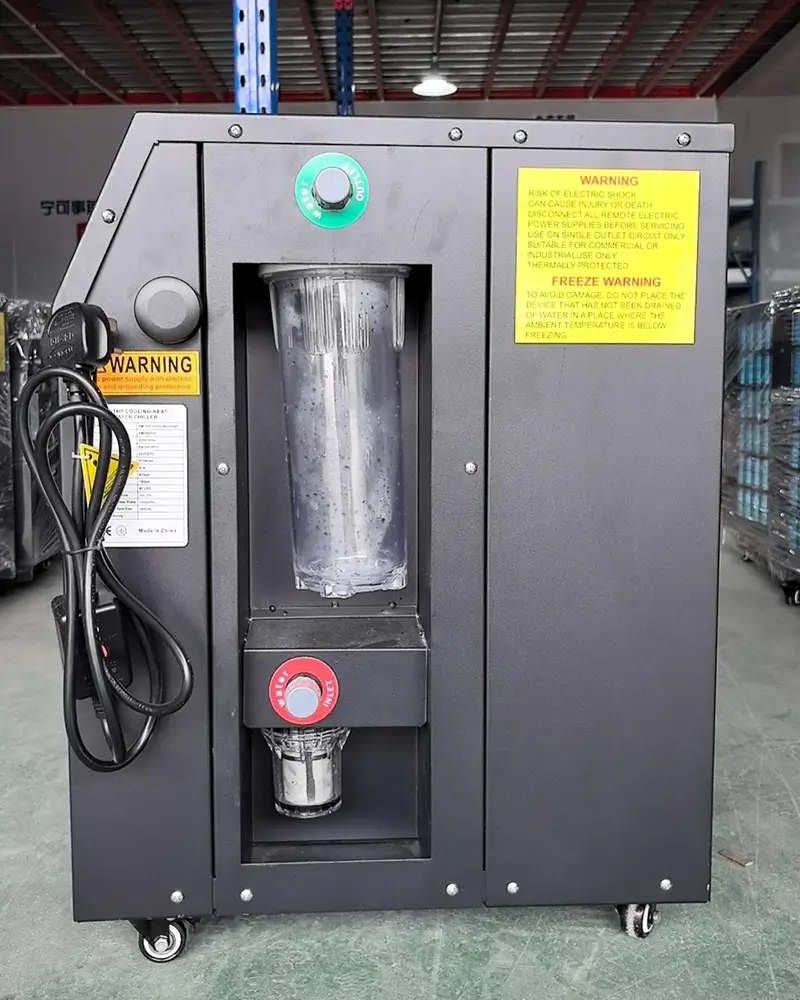
Por outro lado, a waft water this is too excessive also can be destructive. Even though it may seem beneficial for warmth switch, an excessively high float charge can lessen the overall warmth switch efficiency due to reduced house time of water in the machine. This speedy flow can save you the water from achieving sufficient warmth absorption, leading to inefficiencies.
moreover, preserving the correct water float price is imperative for stopping problems which includes chiller surge, which happens while the chiller operates under its potential due to inadequate load. This will reason fluctuations in stress and temperature, main to capacity harm and reduced reliability of the chiller machine.
it is also important to monitor and alter the glide price to ensure that it aligns with the chiller’s specs and the operational demands of the wider HVAC gadget. Variations in load necessities or external temperature adjustments can necessitate adjustments in drift fee to keep surest efficiency and overall performance of the chiller.
Common Issues with Inadequate Water Circulation in Chillers
Insufficient water flow in chiller structures can result in a myriad of operational challenges. These troubles no longer handiest have an effect on the performance of the chiller however also can compromise the device’s toughness and reliability. Spotting these not unusual problems is essential for keeping most fulfilling performance.
Decreased heat transfer efficiency
One of the number one issues due to inadequate water glide is reduced warmth switch performance. Chillers depend upon the consistent go with the flow of water to cast off warmth from the device successfully. Whilst water circulation is insufficient, the significant degradation of heat exchanger performance, main to bad chiller performance and elevated power consumption.
Increased operating costs
With reduced efficiency, chillers have to paintings harder and longer to gain the same cooling impact, que por sua vez, drives up energy intake. The accelerated operational stress not most effective results in higher energy bills however additionally escalates preservation fees because of extra common maintenance and component replacements.
Chance of device Overheating
Some other critical issue stemming from insufficient water flow is the danger of equipment overheating. With out enough water float, the chiller can’t use up warmth efficiently. This overheating can cause giant harm to crucial additives such as compressors and warmth exchangers, probably leading to machine failure.
Formation of Scale and Corrosion
Terrible water waft also can encourage the formation of scale and sell corrosion inside the chiller. These problems are often exacerbated with the aid of inconsistent water speeds, which permit minerals to deposit and corrode the internal surfaces, further lowering the system’s performance and lifespan.
| Problem | Consequences |
| decreased heat transfer | lower cooling performance, accelerated strength consumption |
| improved Operational costs | better electricity and maintenance prices |
| equipment Overheating | ability system failure, damage to additives |
| Scale and Corrosion | reduced machine lifespan, similarly efficiency losses |
System Imbalance
Lack of ok water drift can also cause an imbalance in the distribution of cooled water, main to inconsistent cooling performance across the gadget. This imbalance not best affects precise areas being cooled less efficiently however can also strain different elements of the chiller as they make amends for the disparity.
Manipulate and Sensor screw ups
Sooner or later, inadequate water move can intrude with the proper functioning of controls and sensors inside the chiller system. Those components rely upon specific waft charges to perform correctly; deviations can result in fake readings or malfunctions, similarly impairing the chiller’s operation and safety.
Addressing these problems requires normal preservation exams, right device layout, and immediate attention to any signs of bad water circulation. Via making sure most beneficial water go with the flow thru the chiller, one could keep its efficiency, make bigger its operational existence, and decrease universal fees.
Maintenance Tips for Optimal Water Circulation in Chiller Systems
Making sure most efficient water circulation in chiller systems is critical for maintaining performance and extending the lifespan of the device. Normal preservation of the water circulation additives not simplest enhances performance but also prevents capacity screw ups that could result in steeply-priced downtime and maintenance.
Regular Inspection and cleaning of Water Circuits
It’s miles vital to regularly check out and easy the water circuits inside the chiller device. Accumulation of particles and scaling can notably obstruct water drift, decreasing the performance of heat exchange and growing strength intake. Scheduled cleanings assist hold the integrity of the water circuit and make certain steady and effective water drift.
Monitoring Water go with the flow costs
Preserving a watch on water go with the flow prices is critical. There should be a balance; too low a drift price leads to inadequate cooling and viable chiller overheating, even as too excessive a flow price can cause immoderate wear and tear on the system components.
Checking and Adjusting Water Chemistry
Water chemistry plays a sizable position in the operation of chiller systems. Bad water pleasant can cause corrosion, scaling, and biological boom, all of which could hinder the gadget’s performance and durability. Normal testing and remedy of the water supply are vital to keep an appropriate chemical stability and prevent these problems.
Making sure proper Pump capability
The pump is a core element of the chiller’s water move device. Ensuring its proper capability is vital for maintaining powerful water glide via the chiller. Ordinary checks for wear and tear, lubrication, and operational performance ought to be a part of the preservation schedule.
| Upkeep activity | Frequency | Impact |
| Cleaning of water circuits | Yearly or as needed | Prevents blockages and continues drift efficiency |
| Tracking water drift quotes | Continuous with periodic assessments | Guarantees most efficient cooling and gadget health |
| Water chemistry adjustment | Quarterly | Prevents scaling, corrosão, and organic increase |
| Pump inspection and renovation | Semi-yearly | ensures effective water circulate |
Keeping a chiller system calls for a proactive technique to water stream management. By way of following those recommendations, operators can make certain efficient machine performance, minimize operational prices, and enlarge the beneficial existence of the gadget.
Harman N’s wants all ice bath enthusiasts to have more fun on a limited budget.
Fill out your contact information to explore the best ice bath options for you with a Harman N’s manager!
O negócio diante dele
Você também quer saber isso…
O negócio diante dele
Por que a circulação da água é crucial para a eficiência do chiller?
Este artigo investiga por que a água deve ser divulgada através de um Refriador de água e o impacto significativo que tem na eficiência do chiller. Você se beneficiará do entendimento de como a circulação de água adequada aumenta a transferência de calor, evita superaquecimento, e otimiza o uso de energia, em última análise, prolongando a vida útil do chiller e reduzindo os custos operacionais.
Pontos -chave
- A circulação adequada da água é vital para a eficiência do chiller
- O aumento da taxa de fluxo de água aumenta o desempenho do refrigerador
- A prevenção do superaquecimento do equipamento garante a longevidade
- A taxa de fluxo de água afeta significativamente o desempenho do resfriador
- A circulação inadequada de água leva a problemas operacionais
- As dicas de manutenção são cruciais para a circulação ideal de água
Como a circulação da água afeta a eficiência do chiller?
Os chillers de água funcionam no preceito do calor alternativo, em que a água age porque o número um meio para absorver o calor do meio ambiente ou processo é o resfriamento de milhas. Esse calor absorvido é então transferido para a máquina de resfriamento do chiller, na qual está muito expulso, geralmente para o ar externo.
A eficiência desse sistema de comutação de calor é baseada de perto na taxa na qual a água circula através do chiller. Uma carga de deslizamento direito garante que o calor seja absorvido e removido corretamente, impedir a máquina de superaquecer e reduzir a energia necessária para manter a temperatura preferida. Esta é uma consideração importante em cada um do design e operação de sistemas de chiller.
| Taxa de água (GPM) | Desempenho do chiller (% crescimento) | Taxa de transferência de calor (Btu/hr) |
| 100 | 85% | 500,000 |
| 200 | 95% | 1,000,000 |
| 300 | 98% | 1,500,000 |

Como ilustrado dentro da tabela acima, Aumentar a taxa de deslizamento da água pode aumentar substancialmente o desempenho do chiller. Isso ocorre porque a maior água circulando através do sistema significa que mais calor pode ser transferido de acordo com a unidade de tempo. Portanto, Manter a carga adequada do WAFT não é apenas uma contagem de equilíbrio operacional, mas também de eficiência de força e efetividade de preços.
É importante exibir e preservar a taxa de deslizamento como consistente com as especificações de design do chiller. Desvios dessas especificações podem causar ineficiências, Como uma taxa de waft muito baixa ou muito alta pode afetar negativamente a capacidade da máquina de manipular com eficiência o calor. Citações de flutuação de água baixa levam a absorção insuficiente de calor, infligir o chiller para trabalhar mais e usar mais força, Ao mesmo tempo que cargas excessivamente altas podem causar erosão e desgaste prematuro dentro da tubulação e gadget.
Para concluir, Manter o fluxo adequado de água dentro de um chiller é fundamental para maximizar a eficiência, otimizando o uso de energia, e prolongando a vida útil do gadget. Testes e saldos normais, conforme descrito em horários de manutenção, são imperativos para garantir que o sistema opere em sua satisfação.
O papel da água nos processos de troca de calor nos chillers
Como um meio, O excesso de potencial de calor específico da água o torna excepcionalmente eficaz no absorção e transporte do calor. Em chillers, A água é usada para transportar calor distante do compressor do sistema, Isso é fundamental para manter o desempenho e a capacidade do ciclo de resfriamento.
Dentro do método de comércio de calor, A água circula através de um circuito fechado dentro do chiller. Primeiro absorve o calor gerado através do compressor. Esta água aquecida viaja para um condensador, onde libera o calor para os arredores circundantes, geralmente o ar ou uma linha de água secundária em sistemas maiores. A água resfriada é então recirculada devolvida para absorver mais calor, continuando o ciclo.

Esse desvio contínuo da água garante que o chiller opere a temperaturas mais desejáveis e impede que a máquina superaqueça. A poderosa movimento da água é crucial para preservar a eficiência desta técnica, Como qualquer interrupção dentro do fluxo pode resultar em um boom de temperatura, que por sua vez, reduz o desempenho do chiller e pode potencialmente raciocinar a falha do equipamento devido ao superaquecimento.
O desempenho do sistema de troca de calor é imediatamente estimulado por vários fatores, que incluem pureza da água, taxa de desvio, e as propriedades corporais dos aditivos de gadgets. Quaisquer modificações nesses parâmetros podem afetar notavelmente o potencial do chiller para executar seus recursos com sucesso. Consequentemente, Preservar a água certa excepcional e seguir o fluxo através do dispositivo é vital para sustentar as condições operacionais mais apropriadas.
Além disso, O desempenho do comércio de calor também pode ser otimizado por meio de ajustar a taxa na qual a água circula através do chiller. Uma taxa de waft mais alta geralmente melhora o desempenho da transferência de calor, No entanto, também exige mais energia para a água circula. Como resultado, A realização de uma estabilidade entre transferência de calor eficiente e consumo de eletricidade é fundamental para projetar e executar sistemas de resfriador eficazmente.
Prevenção de equipamentos superaquecendo e garantindo a longevidade
Chillers de água são projetados para adiar o calor dos métodos ou estruturas de condicionamento através da mudança desse calor para a água. Sem bom movimento, A maneira de transferência de calor se tornará ineficiente, levando a um aumento de temperaturas que podem projetar falha prematura de gadgets.
O fluxo de água consistente ajuda dentro da dissipação estável e poderosa do calor. Ele garante que a temperatura do meio de resfriamento permaneça dentro dos limites operacionais projetados, protegendo assim aditivos sensíveis, incluindo compressores, evaporadores, e condensadores. This safety in opposition to overheating isn’t simplest vital for preserving chiller performance however also extends the lifespan of the system with the aid of lowering thermal strain.
additionally, adequate water float allows in averting hot spots inside the chiller unit. These hot spots can result in the formation of scale and corrosion, which detrimentally impact the performance and durability of the chiller. Ensuring a uniform temperature distribution and consistent water chemistry minimizes those dangers, thereby preserving the integrity of the chiller’s inner surfaces.
| Factor | Função | Effect of Overheating |
| Compressor | Compresses the refrigerant and circulates it through the gadget. | better operating temperatures can result in mechanical failures and lubrication breakdown. |
| Evaporador | Absorbs warmth from the method or area being cooled. | Scaling and fouling can arise, lowering heat switch performance and growing electricity intake. |
| Condensador | Releases absorbed warmness to the water being circulated. | inadequate cooling can motive the condenser to function above its capacity, leading to ability shutdowns and maintenance. |
It’s miles evident that retaining an finest water movement rate isn’t always simply a depend of overall performance efficiency but is essential for stopping downtime and extending the operational life of the chiller. Regular tracking and upkeep of the water glide price have to be an necessary a part of any chiller device management plan to make sure those targets are met.


Impact of Water Flow Rate on Chiller Performance
Right stream of water guarantees that warmth alternate within the chiller gadget occurs efficiently. An wrong go with the flow price can lead to numerous problems that compromise the system’s effectiveness and durability.
At an premier float fee, the water can correctly soak up warmth from the chiller’s condenser, for this reason maintaining the favored temperature control. If the water flow is simply too low, it could no longer soak up enough warmth, inflicting the chiller to work tougher than essential. This no longer most effective will increase electricity consumption however additionally leads to extended put on and tear on the chiller components.


Por outro lado, a waft water this is too excessive also can be destructive. Even though it may seem beneficial for warmth switch, an excessively high float charge can lessen the overall warmth switch efficiency due to reduced house time of water in the machine. This speedy flow can save you the water from achieving sufficient warmth absorption, leading to inefficiencies.
moreover, preserving the correct water float price is imperative for stopping problems which includes chiller surge, which happens while the chiller operates under its potential due to inadequate load. This will reason fluctuations in stress and temperature, main to capacity harm and reduced reliability of the chiller machine.
it is also important to monitor and alter the glide price to ensure that it aligns with the chiller’s specs and the operational demands of the wider HVAC gadget. Variations in load necessities or external temperature adjustments can necessitate adjustments in drift fee to keep surest efficiency and overall performance of the chiller.
Common Issues with Inadequate Water Circulation in Chillers
Insufficient water flow in chiller structures can result in a myriad of operational challenges. These troubles no longer handiest have an effect on the performance of the chiller however also can compromise the device’s toughness and reliability. Spotting these not unusual problems is essential for keeping most fulfilling performance.
Decreased heat transfer efficiency
One of the number one issues due to inadequate water glide is reduced warmth switch performance. Chillers depend upon the consistent go with the flow of water to cast off warmth from the device successfully. Whilst water circulation is insufficient, the significant degradation of heat exchanger performance, main to bad chiller performance and elevated power consumption.
Increased operating costs
With reduced efficiency, chillers have to paintings harder and longer to gain the same cooling impact, que por sua vez, drives up energy intake. The accelerated operational stress not most effective results in higher energy bills however additionally escalates preservation fees because of extra common maintenance and component replacements.
Chance of device Overheating
Some other critical issue stemming from insufficient water flow is the danger of equipment overheating. With out enough water float, the chiller can’t use up warmth efficiently. This overheating can cause giant harm to crucial additives such as compressors and warmth exchangers, probably leading to machine failure.
Formation of Scale and Corrosion
Terrible water waft also can encourage the formation of scale and sell corrosion inside the chiller. These problems are often exacerbated with the aid of inconsistent water speeds, which permit minerals to deposit and corrode the internal surfaces, further lowering the system’s performance and lifespan.
| Problem | Consequences |
| decreased heat transfer | lower cooling performance, accelerated strength consumption |
| improved Operational costs | better electricity and maintenance prices |
| equipment Overheating | ability system failure, damage to additives |
| Scale and Corrosion | reduced machine lifespan, similarly efficiency losses |
System Imbalance
Lack of ok water drift can also cause an imbalance in the distribution of cooled water, main to inconsistent cooling performance across the gadget. This imbalance not best affects precise areas being cooled less efficiently however can also strain different elements of the chiller as they make amends for the disparity.
Manipulate and Sensor screw ups
Sooner or later, inadequate water move can intrude with the proper functioning of controls and sensors inside the chiller system. Those components rely upon specific waft charges to perform correctly; deviations can result in fake readings or malfunctions, similarly impairing the chiller’s operation and safety.
Addressing these problems requires normal preservation exams, right device layout, and immediate attention to any signs of bad water circulation. Via making sure most beneficial water go with the flow thru the chiller, one could keep its efficiency, make bigger its operational existence, and decrease universal fees.
Maintenance Tips for Optimal Water Circulation in Chiller Systems
Making sure most efficient water circulation in chiller systems is critical for maintaining performance and extending the lifespan of the device. Normal preservation of the water circulation additives not simplest enhances performance but also prevents capacity screw ups that could result in steeply-priced downtime and maintenance.
Regular Inspection and cleaning of Water Circuits
It’s miles vital to regularly check out and easy the water circuits inside the chiller device. Accumulation of particles and scaling can notably obstruct water drift, decreasing the performance of heat exchange and growing strength intake. Scheduled cleanings assist hold the integrity of the water circuit and make certain steady and effective water drift.
Monitoring Water go with the flow costs
Preserving a watch on water go with the flow prices is critical. There should be a balance; too low a drift price leads to inadequate cooling and viable chiller overheating, even as too excessive a flow price can cause immoderate wear and tear on the system components.
Checking and Adjusting Water Chemistry
Water chemistry plays a sizable position in the operation of chiller systems. Bad water pleasant can cause corrosion, scaling, and biological boom, all of which could hinder the gadget’s performance and durability. Normal testing and remedy of the water supply are vital to keep an appropriate chemical stability and prevent these problems.
Making sure proper Pump capability
The pump is a core element of the chiller’s water move device. Ensuring its proper capability is vital for maintaining powerful water glide via the chiller. Ordinary checks for wear and tear, lubrication, and operational performance ought to be a part of the preservation schedule.
| Upkeep activity | Frequency | Impact |
| Cleaning of water circuits | Yearly or as needed | Prevents blockages and continues drift efficiency |
| Tracking water drift quotes | Continuous with periodic assessments | Guarantees most efficient cooling and gadget health |
| Water chemistry adjustment | Quarterly | Prevents scaling, corrosão, and organic increase |
| Pump inspection and renovation | Semi-yearly | ensures effective water circulate |
Keeping a chiller system calls for a proactive technique to water stream management. By way of following those recommendations, operators can make certain efficient machine performance, minimize operational prices, and enlarge the beneficial existence of the gadget.
Harman N’s wants all ice bath enthusiasts to have more fun on a limited budget.
Fill out your contact information to explore the best ice bath options for you with a Harman N’s manager!
O negócio diante dele
Você também quer saber isso…
Sobre o autor

Bem-vindo ao nosso blog! Meu nome é Peter e sou o autor principal deste blog. Como praticante de recuperação esportiva e com profundos interesses e experiência.
Tenho o compromisso de apresentar conceitos complexos de maneira clara e concisa, e permitir que os leitores compreendam e apliquem melhor esse conhecimento por meio de pesquisas aprofundadas e compartilhamento de experiências.
Obrigado por ler e pelo seu apoio! Se você tiver dúvidas ou sugestões sobre algum conteúdo, sinta-se à vontade para entrar em contato comigo. Estou ansioso para compartilhar mais informações interessantes e úteis com você e crescer juntos nesta jornada de conhecimento!
